Is the lively bright evergreen of your conifer turning a sickly brown?
Watching stately trees like conifers deteriorate is no fun. After all, people plant these magnificent specimens to be enjoyed by generations.
A dying tree can quickly become a safety hazard so it’s important that you recognize the size and take prompt action.
But if you are considering cutting your dying conifer down, there is hope that you can save your tree.
In this article, we share six steps you can take to revive a dying conifer.
How to revive a dying conifer depends on why it is dying?
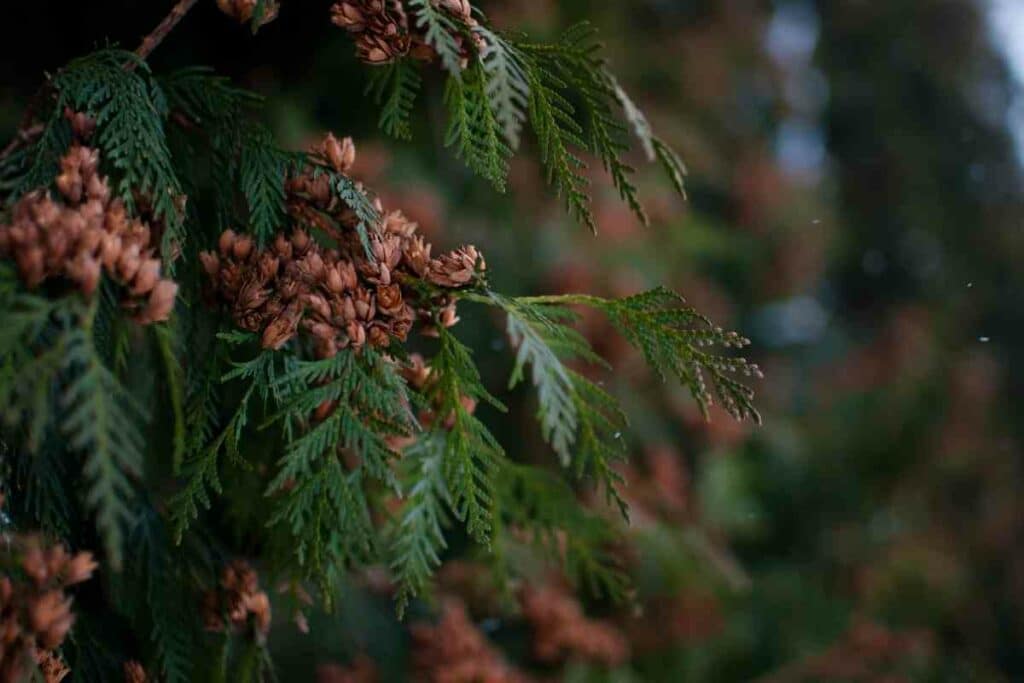
- If your conifer is dying from a water deficiency, water the tree a lot once the ground thaws. Preemptively, water it before the ground freezes and add mulch.
- If your conifer is dying from needle cast disease, remove the infected foliage and branches and apply fungicide.
- If your conifer is dying from rust disease, remove infected branches and needles and apply fungicide.
- If your conifer is dying from evergreen root rot, shovel the moist dirt from around the roots and let them dry.
- If your conifer is dying from pine beetles, it will likely need to be removed. You can only treat pine beetles preemptively by applying insecticide and keeping your tree healthy.
- If your conifer is dying from lack of sun, prune the upper branches or relocate your tree.
Is your conifer dying and do you need to revive it?
Read on to learn about different reasons conifers die and how to remedy them!
Conifers are a magnificent family of trees
Coniferous trees include some of the most recognizable and admired trees in the world.
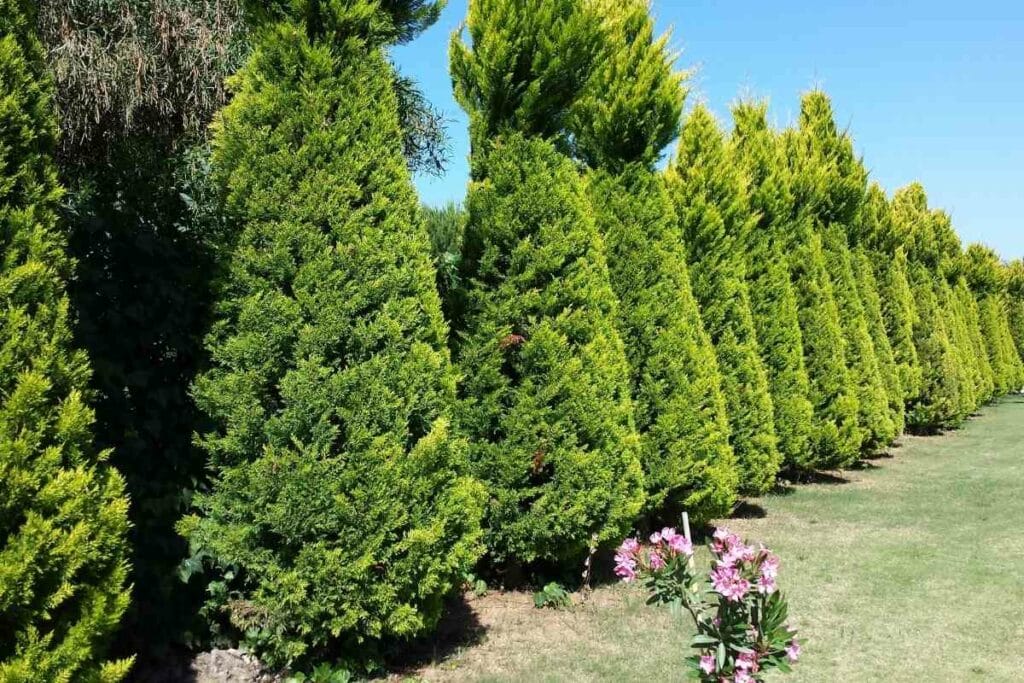
They derive their name from the cones they bear and include trees and shrubs like:
- Scots pine
- European Larch
- Cedar of Lebanon
- Douglas Fir
- Yew
- Redwood
- Spruce
- Arborvitae
Their beauty, productivity, and longevity make conifers trees you want to preserve.
As a family of trees, they are the world’s largest carbon sink and are essential for the production of lumber and paper.
Conifer forests have a sanitizing effect, purifying the air in large areas.
Conifer species are also an important food source and habitat for wildlife, so it is a shame if you have to cut down an ailing tree.
Conifers are known for their remarkable growth
Conifers are some of the fastest-growing trees, with species divided into slow, moderate, and fast-growing conifers.
Even the slowest growing conifers will gain up to a foot in height annually and the fastest, double that!
Don’t worry, the growth is not indefinite, once they achieve their maximum height, conifers slow or even completely stop growing.
A mature tree that has stopped growing is not necessarily dying.
My conifer is turning brown – is it dying?
When the rich evergreen of your conifer is replaced with a brown color, it’s obvious that something’s wrong.
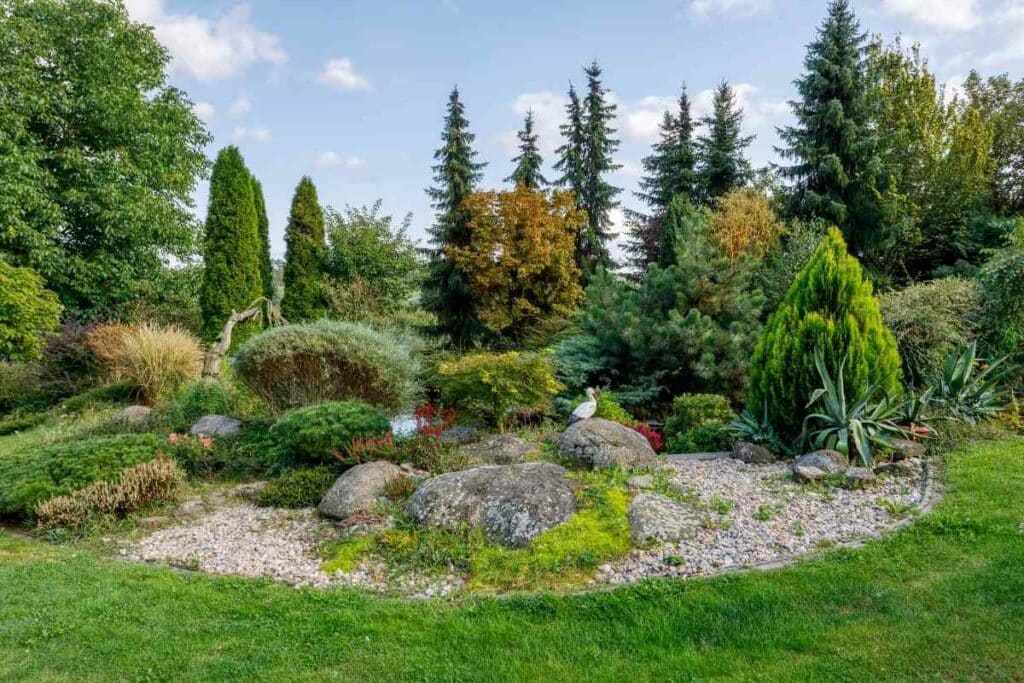
If you want to save a dying conifer, you first have to identify the underlying problem.
To establish what is wrong with your tree here are some common causes of a browning or even dying conifer.
1. Over-pruning
Pruning is essential for the health of your conifer, but if the pruning is too extensive, it can shock or even kill the tree.
Conifer topping, removing the crown of the tree, disrupts the tree’s growth pattern and movement of essential hormones. This can also kill the tree.
The best time to prune a conifer is as it is leaving its dormancy in the spring, or when it becomes semi-dormant in the summer.
Pruning a conifer in late summer or autumn can cause the tree to develop browned and bald patches which will need time to recover.
A browned ailing conifer after overzealous pruning will probably become unstable and die, especially if its crown has been removed.
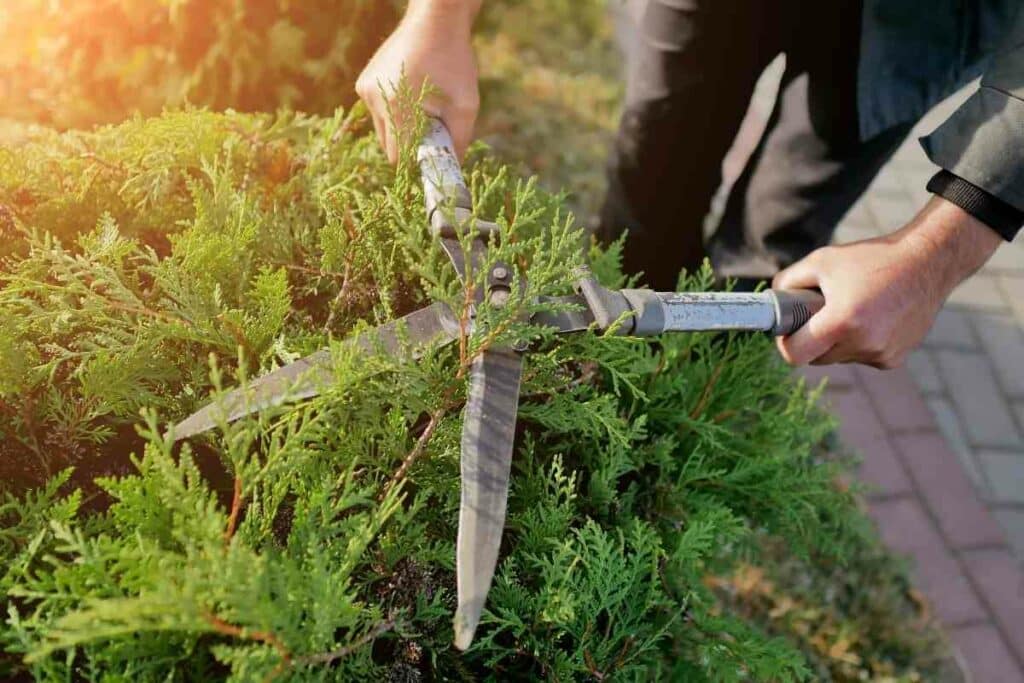
2. Snow on the branches
Don’t underestimate the damaging effects of snow on conifers, especially those that are small or young.
A heavy load of snow can bend or snap the branches of your conifer or even bend an entire tree.
Browned needles are a sign that an inner branch may have snapped and will need to be removed. Conifers that are non-native may struggle with snow loads more.
3. Winter drying
Winter drying is common, season conifer condition that affects every type of conifer.
It develops in the period between mid-winter and early spring in trees that are above the snow line.
In these cold but often sunny and windy conditions, transpiration takes place in daylight hours, but the tree cannot replace the moisture it loses because the ground is frozen.
This leads to the tree gradually drying out with the needles turning brown, dry, and dropping off the tree.
You’ll know its winter browning as the peripheral needles will brown first with the discoloration progressing inwards.
At this stage, the tree may look like it is dying, but it should quickly recover in the spring thaw.
Here are some pointers on winter damage from the University of Wyoming:
4. Diseases
Like other plants, shrubs and trees conifers are vulnerable to a variety of viral, bacterial, or fungal diseases.
Disease in conifers is often introduced through damaged or rubbing branches that have not been pruned, or poor soil conditions.
Here are some of the most serious conifer diseases which can kill a tree:
- Conifer root and butt rot: This is caused by the fungus H. annosum that targets the roots butts and trunks of a conifer. It spreads throughout the tree via its roots, eventually killing the tree.
- Needle cast disease: This fungal disease causes the needles of the conifer to turn yellow brown, before being cast off the tree.
- Diplodia Blight of Pines: This blight disease is a fungal infection that can kill shoots, branches, and even entire trees. Older and more exposed trees are more vulnerable to infection. Consider the Diplodia pinea fungus as the cause of brown stunted growth and brown needles on your tree.
- Fusiform rust: This is a disease of conifers and oaks. It is caused by an extremely aggressive fungus called Cronartium quercuum that produces ugly crippling cankers on pine trees. Arborists remove the affected branches or even partially burn an infected conifer to arrest the spread of the infection before it becomes fatal.
5. Pests
Infestation by pests can also kill conifers.
Many pests are sap-sucking creatures that weaken the tree or introduce diseases.
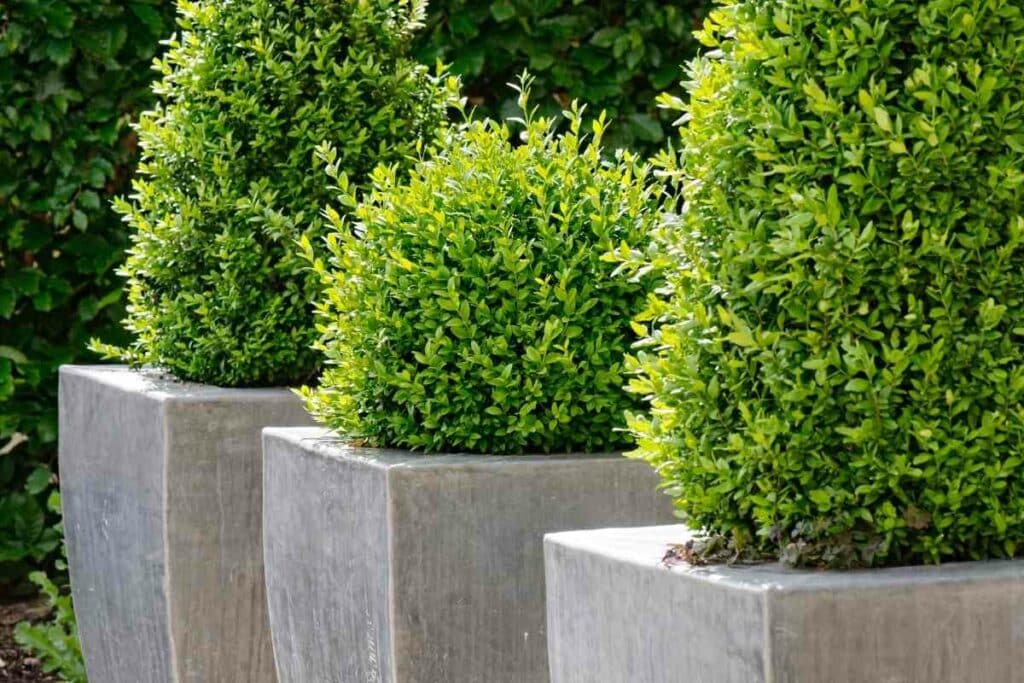
Older, neglected trees are more likely to be overwhelmed by pests, but you shouldn’t underestimate pests that show up in healthier trees.
Here is a list of common conifer pests- that can weaken or kill conifers:
- Conifer aphids
- Bark Beetles
- Sawfly larvae
- Pales and White Pine Weevils
- Conifer mites
- Spruce Budworm
- Tussock Moth
- Wooly Adelgids
How to revive a dying conifer?
You may wonder if you can review a dying conifer.
If the conifer is not actually dead and you (or your arborist) know why it is deteriorating, there is hope.
But you have to act fast as the dead parts of your conifer will not regrow.
Here are some steps you can take to revive a dying conifer.
Establish what is going on
This is the most important step as it determines the course of action you’ll take for your tree.
Identifying an underlying problem will include carefully inspecting the tree to look for pests or signs of disease along with environmental factors that could cause the tree to struggle.
If you are not sure what is killing your conifer, seek specialist help from an experienced arborist.
Remove dead branches
Dead and dying branches are a serious hazard as they can fall off the tree.
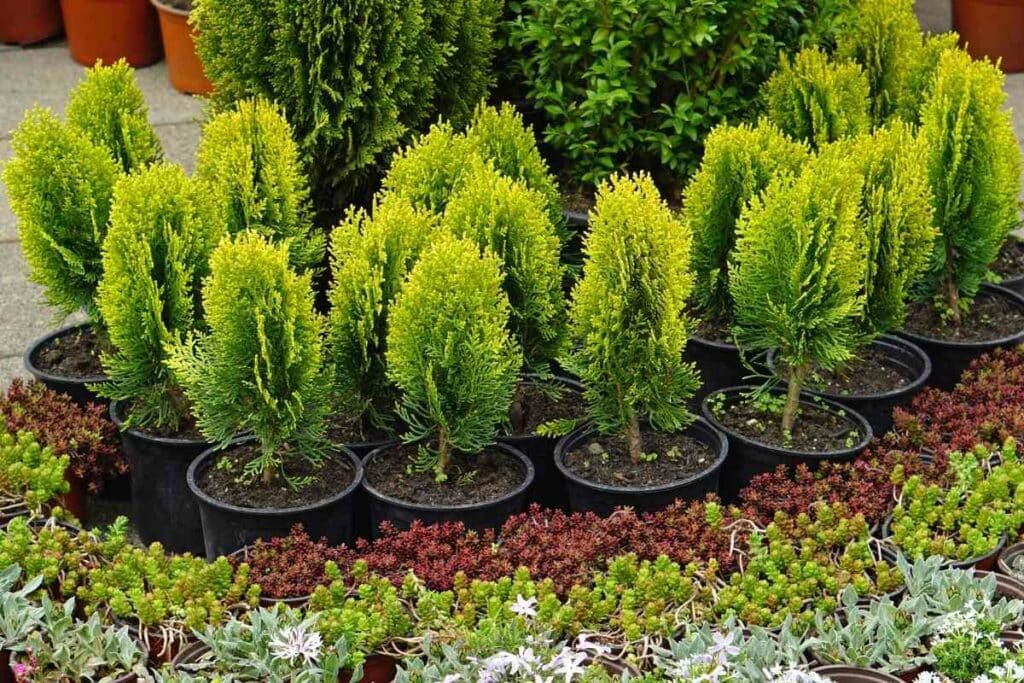
By removing the branches that are dead, or those with brown needles, you make the tree safe and ease the stress on the tree.
Treat disease
If your conifer is dying because of a disease, then you need to apply a suitable treatment.
You don’t want the browning to spread to the other parts of the tree.
The treatment of conifer diseases usually involves:
- Pruning infected branches (make sure you sanitize your equipment before using it on other trees).
- Consider sending a sample of the diseased conifer tissue to a diagnostic clinic for accurate guidance on disease cause and treatments (an arborist can do this for you).
- Spray down the tree with appropriate treatment (fungicide or herbicide) to prevent disease spread. Active agents include copper, mancozeb, thophanate and chlorothalonil.
Tackle pests
Treat pests in a similar way to infected conifers.
You should remove infested needles and branches from the tree and apply a potent insecticide as a last resort as it can kill beneficial insect species that use the tree as a habitat.
Repeated treatments are usually necessary to eradicate pests.
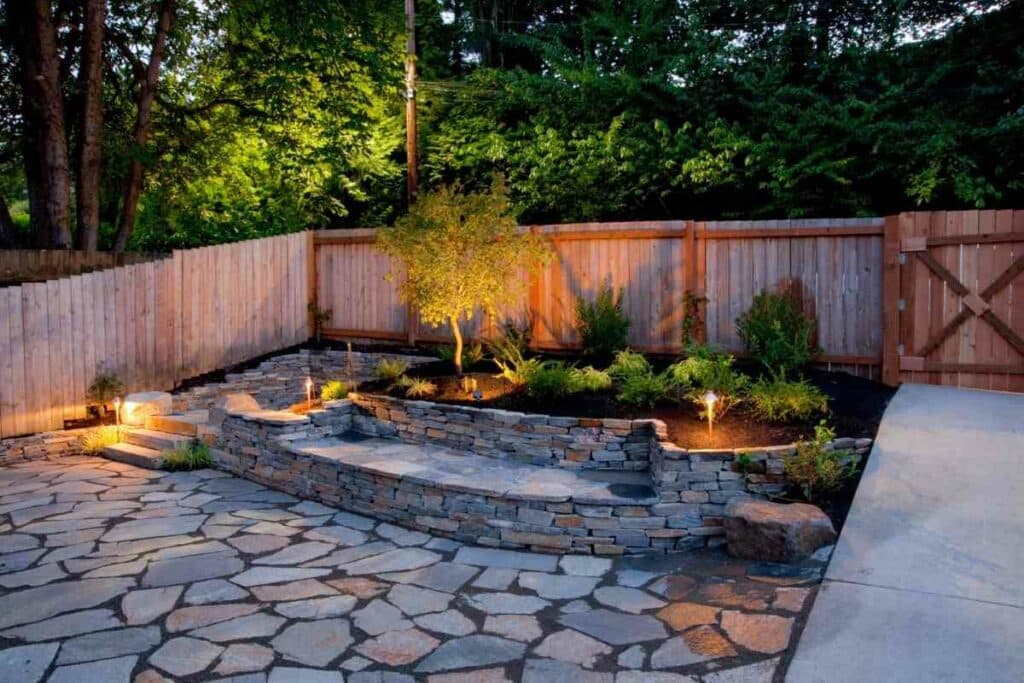
You can also keep pests at bay by encouraging the natural predators of common conifer pests like aphids or mites.
Lacewings, ladybugs and parasitoid wasps are efficient predator species and you can also spray the tree with essential oils like Neem or fatty acids.
Deep watering
A conifer that is browned from winter drying is deeply dehydrated.
After removing any dead branches, you can revive the conifer by undertaking deep watering on a weekly basis.
Start the regimen once the thaw has begun.
Deep watering involves getting water down to the deeper roots of the plants. Use root watering funnels to get the water at least 12-inches into the roots of your conifer.
This short video explains the principles of deep watering trees:
Mulching
Mulching is another effective way to support a conifer that has been injured by a harsh winter.
It can also insulate the roots of a conifer pre-winter to prevent them from freezing.
Composted bark and shredded leaf mulch are great choices for mulching a conifer.
Apply a generous layer of mulch around the roots of your conifer without touching the base of the tree.
Observe
If you decide to revive your conifer, you need to make a long-term commitment to monitoring your tree for a recurrence of its problems and supporting it through further challenges.
An infected for winter-injured tree can be vulnerable to other problems like an infestation.
Be prepared to reapply treatments and remove further branches that do not make it.
Talk to an arborist
It is always advisable to have the tree examined by a qualified arborist as they can detect signs of structural instability in the tree that may make it a safety hazard.
Extensive damage may mean that recovering tree still has to come down.
This short video explains the warning signs that a tree needs to come down.
If the conifer was diseased, completely remove the stump or the tree to prevent a subsequent conifer from becoming infected if you replace it.
FAQs
What do I do if my conifer is dying from a water deficiency?
Dehydration tends to happen in the early spring or winter because there is less rain.
Some symptoms of dehydration include brown or yellow droopy needles, as well as needle drop.
In colder regions the ground will freeze which restricts water from reaching the tree roots, causing injury. Important moisture gets lost through the needles so they turn brown after dehydrating.
You can’t fix this when the temperature is still freezing. But once the ground is thawed, give the tree a lot of water.
Moving forward, water the tree a lot right before the ground is about to freeze. Another preventative measure is to lay a 4-inch layer of mulch around the base of your tree.
This will improve moisture retention and raise the soil temperature to protect your tree.
Wondering how often should you water you conifer?
You should water your conifer once a week very thoroughly and deeply. If you water it frequently and lightly, the roots will grow shallow, causing more dehydration.
What do I do if my conifer is dying from needle cast disease?
Needle cast disease is when the needles of your conifer turn brown, a lot of needles drop, and tree branches die.
It is a very contagious disease and can spread to nearby trees if not treated right away.
If you have more than one conifer in a row and notice needle cast disease in one of them, treat it promptly and check the others carefully for symptoms.
First, remove all of the infected foliage and branches. Get rid of the debris by burning it or removing it from the property. Do not compost it.
Lastly, apply a fungicide to your conifer.
What do I do if my conifer is dying from rust disease?
You can tell that your conifer has rust tree disease if you find powder on the needles that is rust-colored and swollen spots that are brightly colored on the branches.
It is very easy to identify.
Rust disease is caused by fungi that infect the needles which cause blisters that spread and burst.
To Treat Rust Disease – Take off all of the infected branches and needles and apply a fungicide to the tree.
If rust disease is common where you live, choose trees that are rust-resistant. Sometimes the best way to treat something is to prevent it altogether.
What do I do if my conifer is dying from evergreen root rot?
Evergreen root rot is caused by fungus and will quickly kill a tree if it’s not properly treated.
Symptoms include softwood, wilting discolored needles, and blisters on the roots.
To treat root rot, dig all the damp soil near the roots and let them air dry.
Root rot is caused when there is excess water at the roots or if the soil is too moist. Plant your conifer somewhere that the soil drains well to avoid evergreen root rot.
Too much organic matter can cause soil to drain slowly. Soil that is slightly sandy will drain better.
What do I do if my conifer is dying from pine beetles?
Pine beetles suck the sap from branches from the inside out.
Pine beetles leave behind tiny holes surrounded by powder that is rust-colored. The holes drip sap that is yellow.
Pine beetles tend to attack weaker trees, so healthy trees are usually safe. The best way to prevent pine beetles is to keep your tree as healthy as possible.
Prune all diseased or dead branches, remove debris from the base of the tree that might attract diseases, and water your tree well.
If there are pine beetles in your area, take a precautionary measure and put insecticide on your tree.
All you can do is be proactive. Once a tree is infected, it usually has to be removed.
What do I do if my conifer is dying from lack of sun?

Conifers need a lot of full sun. Often the lower branches turn brown when the higher branches block the sun.
Or sometimes the conifer isn’t planted somewhere that is sunny enough.
You can carefully prune the higher branches if the lower branches start to turn brown. If your tree is planted somewhere shady, you should relocate it.
Moving forward, plant conifers in full sun. It may seem counterintuitive since conifers usually grow in highly wooded areas in the wild, but they actually need full sun to thrive.
Final thoughts
There are many reasons your conifer may be dying, but there are just as many ways to revive it. Use our guide to identify why your conifer is dying and how to treat it.
Conifers are pleasant trees to have on your property. They are a wonderful habitat for wildlife and provide refreshing shade in the summer and welcome color in the winter.
Mostly, conifers are low-maintenance trees that have an exceptional growth rate.
However, if these strong and sturdy trees run into problems, a proactive approach should be able to revive and support them back to full health in time.
